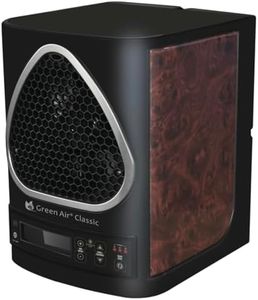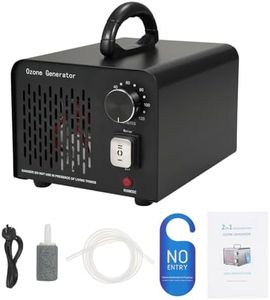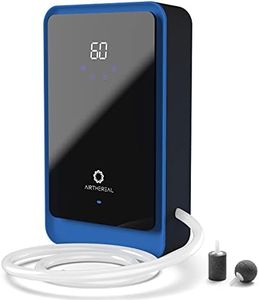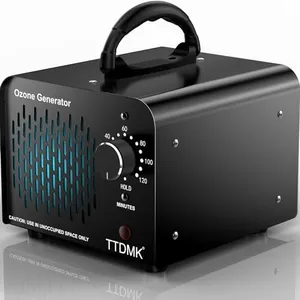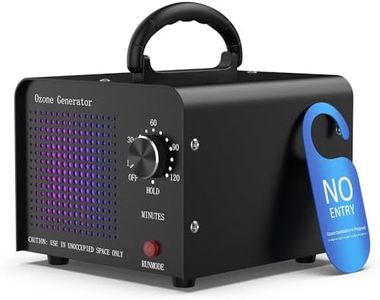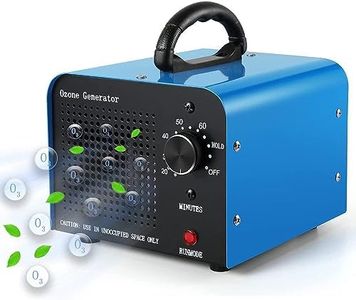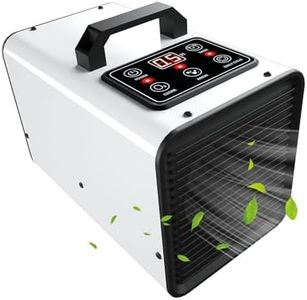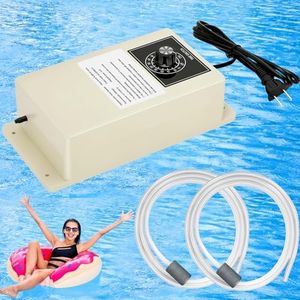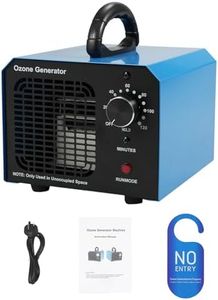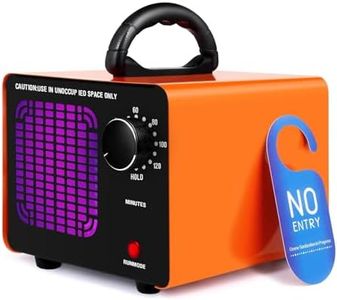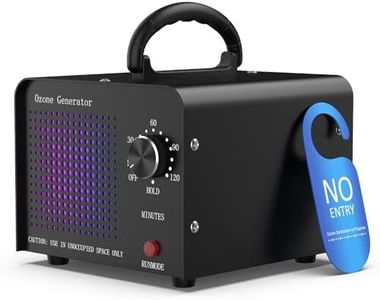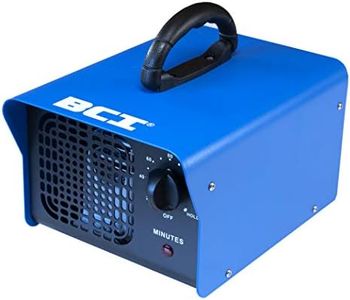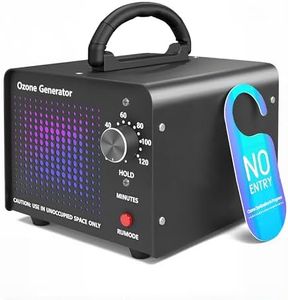We Use CookiesWe use cookies to enhance the security, performance,
functionality and for analytical and promotional activities. By continuing to browse this site you
are agreeing to our privacy policy
10 Best Ozone Generators
From leading brands and best sellers available on the web.By clicking on a link to a third party's website, log data is shared with that third party.
Buying Guide for the Best Ozone Generators
Choosing an ozone generator can seem complicated, but breaking things down into understandable key features will help you make a choice that matches your needs. Ozone generators are used to purify air, remove strong odors, or sanitize certain environments. To buy the right one, you need to consider where and how you’ll use it, how much space you need to treat, and safety features to protect people and pets.Ozone OutputOzone output is a measurement of how much ozone the machine produces in a given hour, usually listed in milligrams per hour (mg/h) or grams per hour (g/h). This is important because a higher output means the device can treat larger spaces or work more quickly, but too much ozone in a small or occupied area can be unsafe. Small outputs (around 100-1000 mg/h) are suited for small spaces like cars or closets, while larger outputs (2000-10000 mg/h or more) are designed for big rooms or commercial spaces. Choose an ozone generator with an output that matches the size of the area you want to treat, and remember to avoid high outputs in regularly occupied spaces.
Timer FunctionA timer function allows you to set the device to operate for a specific period and then automatically switch off. This is a safety feature that prevents overuse and limits exposure to ozone, as it's unsafe for people and pets to be present during operation. Simple timers may offer short time settings (minutes to an hour), while advanced ones let you customize longer cycles. If you plan on leaving the unit unattended, or want a set-and-forget operation, prioritize a model with an easy-to-use and adjustable timer.
Room Coverage AreaRoom coverage area indicates the maximum space the generator can effectively treat, usually given in square feet or square meters. This spec is important to ensure the generator can handle the size of your room, home, or targeted environment. For cars or closets, a small coverage area is fine (under 200 sq ft), but larger rooms, basements, or offices will need higher coverage (500-2000 sq ft or more). Estimate the square footage of your treatment space and pick a model rated for at least that much.
PortabilityPortability refers to the size, weight, and design of the ozone generator. If you plan on moving it between rooms, locations, or using it for vehicles, a lightweight and compact unit with a handle is ideal. Larger, heavier units are better left stationary and suit bigger or fixed spaces. Think about your day-to-day use—if you’ll be carrying the unit frequently, favor portability; if it will stay in one place, a heavier unit might be fine.
Safety FeaturesSafety features can include automatic shut-off, warning indicators, child locks, remote control, or filters to limit accidental ozone release. These features are crucial since ozone, while useful, is hazardous if inhaled for long periods or at high concentrations. If your home has kids, pets, or people with health concerns, look for models with robust safety measures to minimize risks. Always consider your household’s needs and usage patterns to identify the essential safety options.
Ease of Use and MaintenanceEase of use includes how intuitive the controls are, the clarity of the display, and how easy it is to clean or replace key parts like ozone plates or filters. Some units are plug-and-play, while others might require more setup. Maintenance-friendly models let you access and clean parts simply, which keeps the device running smoothly and safely over time. Think about your comfort level with maintenance—if you prefer minimal upkeep, choose a straightforward, user-friendly design.
